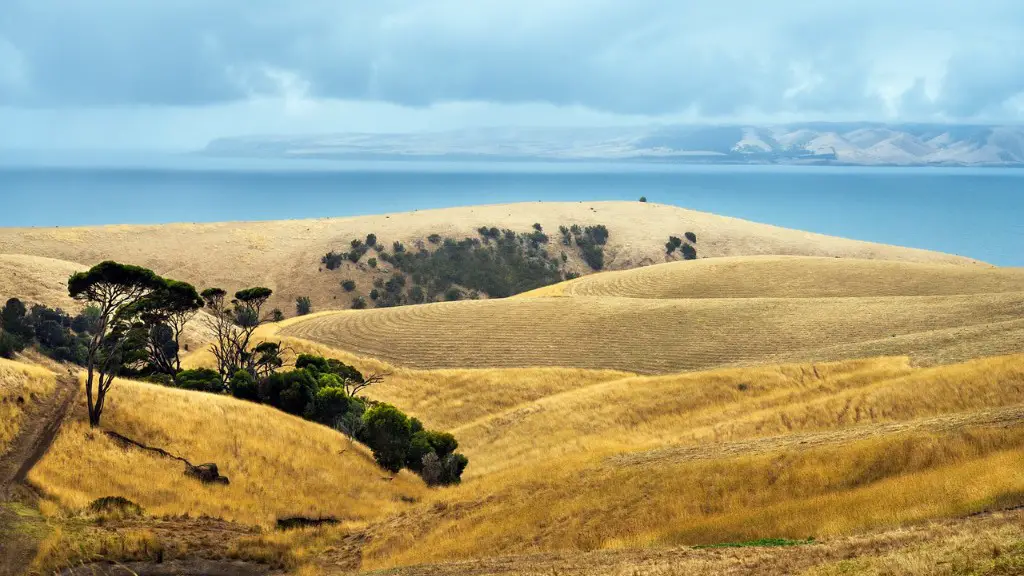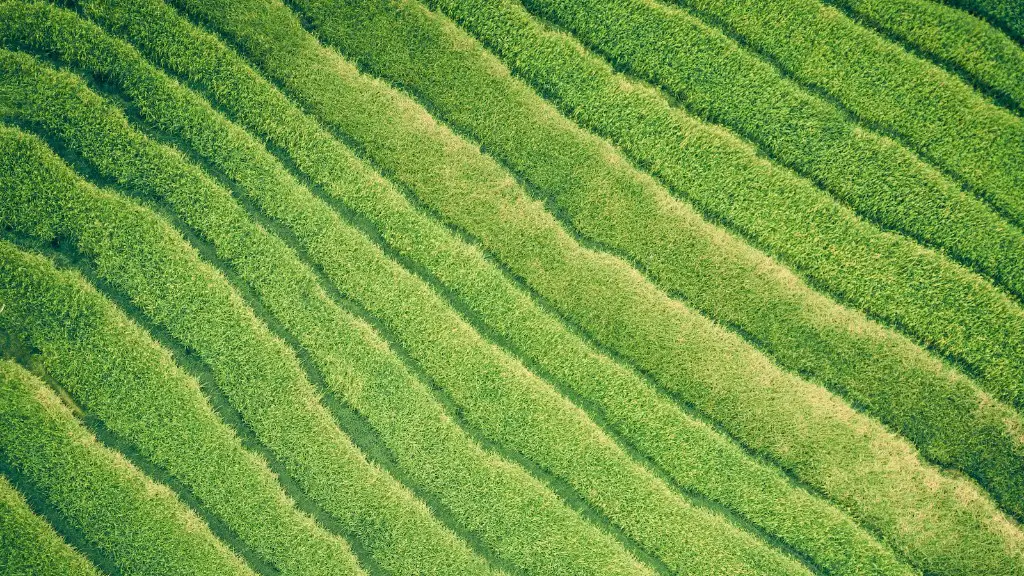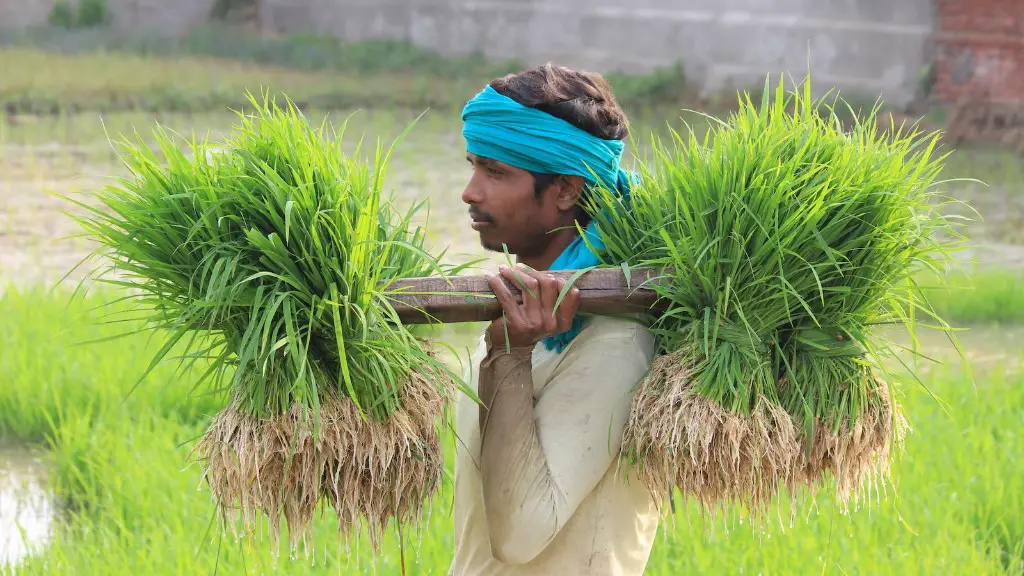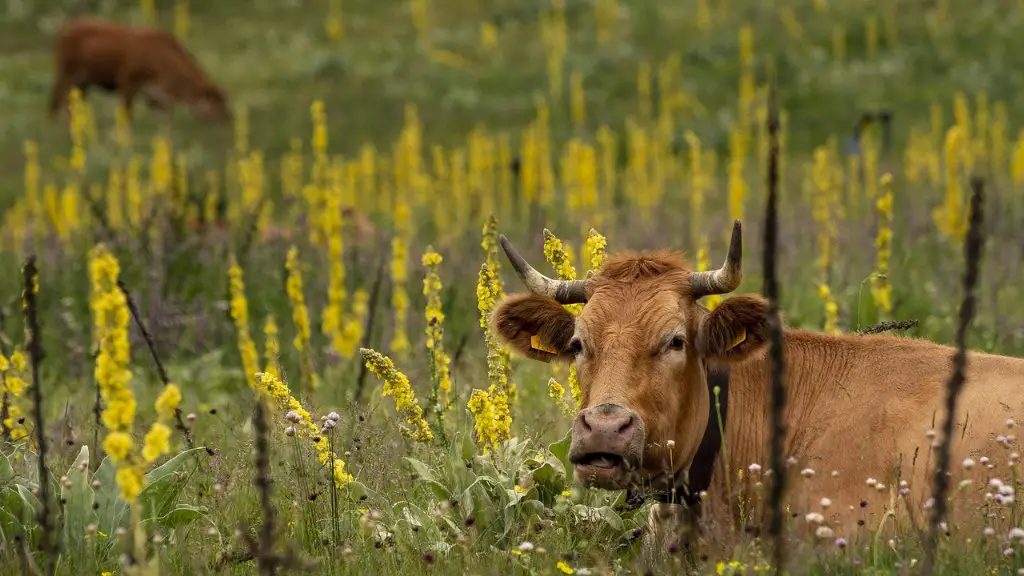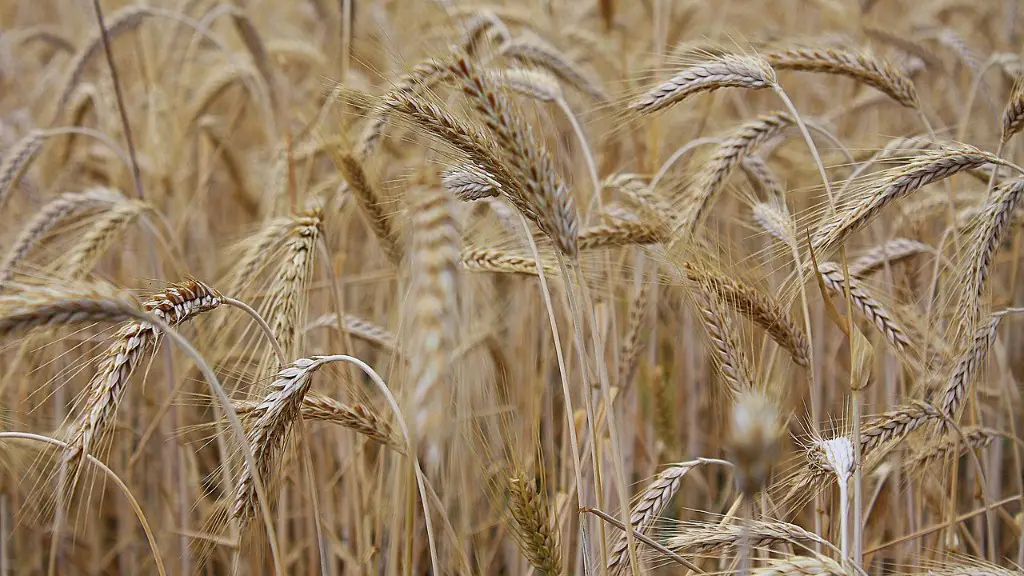Agriculture is an economically important activity in many parts of the world, providing both financial and social benefits to its growers and the surrounding communities. It relies on favourable weather conditions; one of these conditions being relatively mild temperatures. Therefore, it is important to understand how cold weather can affect agriculture.
Farmers must take special precautions to protect their crops against intense cold. Even a few days of excessively low temperatures can be destructive, causing cell walls of plants to break down, reducing vines, buds and blossoms. Frost damage can even reduce the quality of grain.
Water is also an important factor when considering how cold weather affects agriculture. During unusually cold weather, water is more likely to freeze, restricting its availability to crops. Extreme cold temperatures can cause soil to become dry and brittle, leading to limited root space for crop development.
The use of protective covers over plants during cold nights, known as row covers, provides effective barriers from frost. Similarly, light-reflective covers provide a layer of insulation and can offer protection from excess heat or cold.
Greenhouse farming is also utilized in colder areas to protect plants from the cold and maintain a manageable temperature. Heat lamps provide warmth and allow farmers to extend their growing season and, in turn, increase production. Additional methods of minimizing the risk of cold damage to crops include adding organic material and mulch to provide insulation and changing irrigation methods.
Weather forecasting has also become more advanced, providing farmers with a more accurate understanding of potential weather patterns, giving them the opportunity to plan accordingly.
In conclusion, cold weather can have some serious and damaging effects on agriculture, however, with careful planning and protection measures in place, farmers are able to successfully reduce the risk of frost and other environmental factors impacting the quality and quantity of their yield.
Protective Coverings
Protective coverings, such as row covers and light-reflective covers, are often used by farmers during cold weather to protect their crops from frost damage. Row covers provide a barrier through which the frost cannot penetrate, and light-reflective covers offer insulation, helping to maintain a moderate temperature. By covering plants during cold nights, farmers can considerably reduce any risk posed by frost.
Moreover, this type of protection has proven to be effective with other extreme weather conditions, such as heavy rain and hail. Not only do they prevent frost damage, they also prevent rain from over-saturating the ground, which can otherwise lead to serious waterlogging.
In addition to providing this immediate protection, the use of these covers gives farmers the additional benefit of an extended growing season. By supplementing the environment within these covers, farmers can plant earlier in the season and harvest later, increasing the likelihood of successful yields.
Although these covers are effective, they can be expensive and require regular maintenance in order to remain efficient. If not appropriately managed, farmer’s crops can suffer from broken or damaged covers, leaving their plants exposed to the cold weather.
Greenhouse Farming
Greenhouse farming is becoming increasingly popular amongst those growing in cold climates, providing farmers with the opportunity to protect their crops against extreme weather conditions. The use of a greenhouse means plants are able to thrive without being exposed to the cold, minimising the risk of frost.
In a controlled greenhouse environment, farmers can adjust the temperature to the ideal level and maintain favourable conditions by using heat lamps and motorised vents. By doing this, farmers may find that their crops grow quicker and produce a higher quality yield.
In addition to maintaining a safe environment for their crops, farmers are also able to extend their growing season throughout the entire year by controlling the temperature. Depending on the resources available, farmers can cultivate their crops normally and then during periods of cold or wet weather, protect their plants within a greenhouse.
Whilst greenhouse farming has been proven to be effective in protecting plants from the cold, the cost of installation and the required maintenance are two important considerations. Greenhouses are not only expensive to purchase, depending on size and materials, they require regular upkeep such as airflow monitoring, repairs and heat maintenance.
Weather Forecasting
In recent years, weather forecasting has become much more sophisticated, creating a more accurate understanding of potential weather patterns. This provides a great benefit to those farming in cold climates, giving them more time to plan and prepare for frost conditions.
By regularly staying updated with weather forecasts, farmers are able to prepare their crops and take protective measures such as covering their plants or moving them inside a greenhouse. These preventive steps, if taken in a timely fashion, can help to minimise frost damage, as well as allowing farmers to plan alternative methods of protection in advance.
Although being able to predict weather with greater accuracy can help reduce the risk posed by cold weather, it is important to remember that some conditions, such as strong winds, may be difficult to predict. As such, it is important for farmers to keep an eye on their local weather and take suitable measures to protect their crops.
Organic Mulching & Irrigation
During periods of cold weather, farmers may wish to use organic mulching and/or change their irrigation methods to protect their crops. Mulching involves the use of organic material to provide insulation around plants, helping them to resist excessive cold and increasing their root space, resulting in more efficient crop development.
An alternative way to protect against the effects of cold weather is to change an irrigation system’s water supply. If the ground is in danger of freezing and the irrigation is supplied with cold water, alternatives such as forced circulation pumps and lids can give an adequate summer temperature to the ground.
Not only do these methods prove to be particularly effective, but they are also generally affordable, allowing farmers to quickly and easily finance their protective measures. Of course, not all farms have the same requirements and so, individual preferences will determine the most suitable protection solution.
Conclusion
Agriculture is an essential part of many economies and communities around the world, however, it is highly susceptible to changing weather conditions. In particular, cold weather can be very damaging, with frost, dry and brittle soil, and frozen water all having severe consequences on crop yield.
Fortunately, there are several ways in which farmers can minimise the risk of cold weather impacting their crops. Protective covers, greenhouse farming, improved weather forecasting and the use of organic mulching and irrigation can all help to protect plants against harsh weather conditions, giving farmers the best chance of successful yields.
